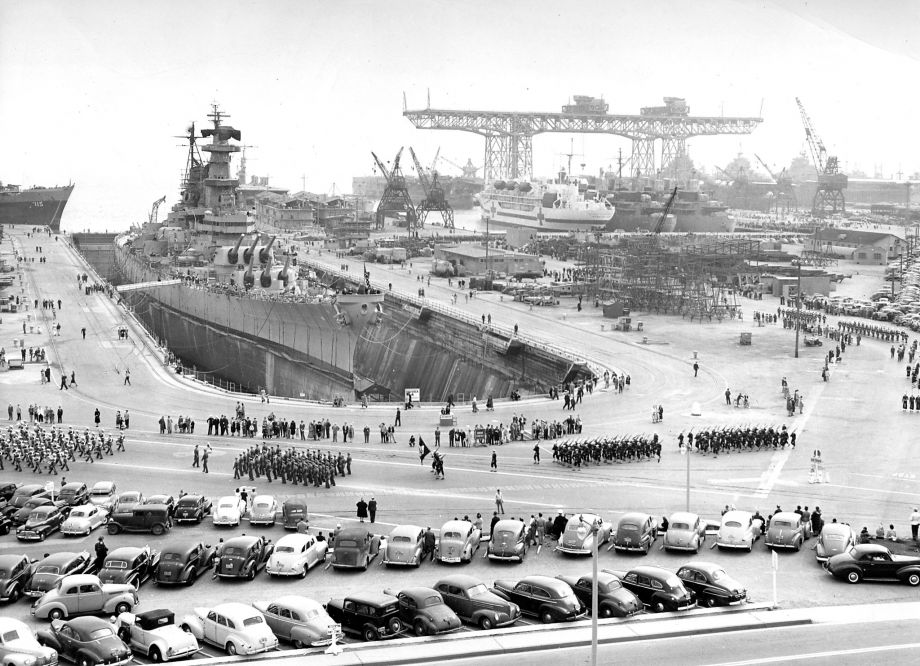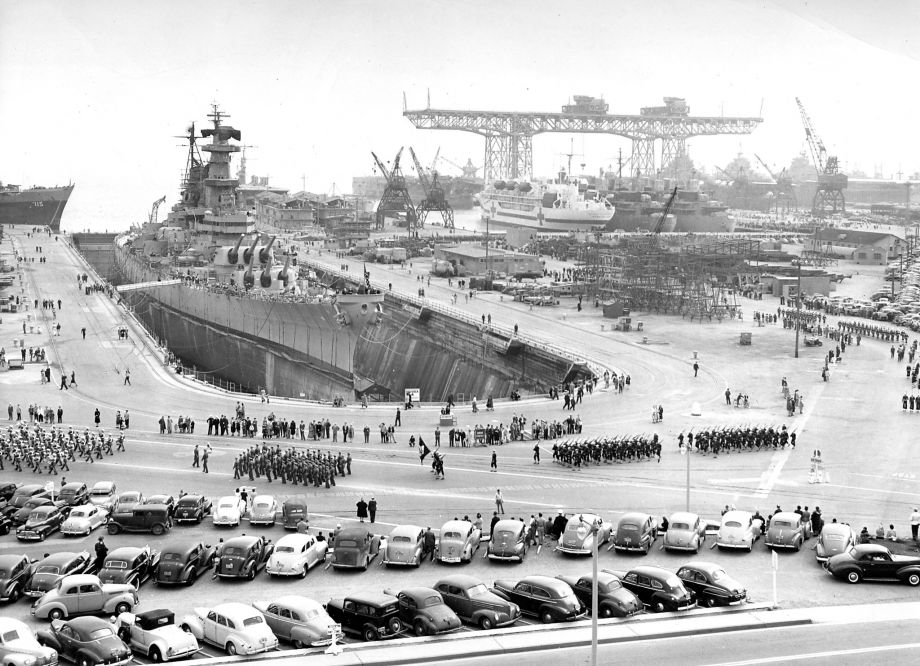 Description: History of the Hunters Point Naval Shipyard in San Francisco, California, including information about asbestos exposure for shipyard workers.
Description: History of the Hunters Point Naval Shipyard in San Francisco, California, including information about asbestos exposure for shipyard workers.
San Francisco was home to the U.S. Naval Shipyard in California. Originally established as a commercial shipyard at Portrero Point in 1870, it was considered one of the largest shipyards in the world at the beginning of the 20th century. Located on 638 acres, the shipyards were built on solid rock. The docks were over 1,000 feet long, easily able to accommodate even the largest of warships and passenger ships. The U.S. Navy acquired it at the beginning of World War II, only 11 days before the bombing of Pearl Harbor.
The U.S. Navy renamed the shipyard Hunters Point Naval Shipyard in 1941. The docks were used as a midpoint between San Diego, Washington, and Bremerton. As World War II continued on, shipbuilding operations were increased so that they could build liberty ships faster. The shipyard’s primary activities from 1941 to 1974 included building, modifying, maintaining, and repairing Navy ships and submarines. The Hunters Point Naval Shipyard was also used for base housing and naval ordnance training exercises.
The naval complex at Hunters Point was also home to the Navy’s Radiation Defense Laboratory (NRDL) and the Pacific Reserve Fleet Units. The Navy Radiological Defense Laboratory at Hunters Point was establish at the end of World War II to decontaminate ships involved with nuclear testing, to study the effects of nuclear weapons, and to develop counter measures. It was also used for cyclotron operations, material storage, animal research studies, and NDRL processing. The NDRL operated from 1946 to 1969, and left many areas of the shipyard still contaminated with radioactivity today.
The Navy decided to decommission Hunters Point Naval Shipyard in 1974, placing it on industrial reserve while retaining ownership of it. Though the Navy ceased their operations at Hunters Point, they leased the property to a commercial ship repair company, Triple A Machine Shop, from 1976 until 1986. Triple A Machine Shop also subleased many of the Hunters Point complex buildings to small businesses.
The USS Missouri battlegroup used Hunters Point Naval Shipyard as a homeport in 1985, but when the Navy took over the location again in 1986 to become an annex to Naval Station Treasure Island, over 900 civilian tenants were told to leave. The concept of the Missouri homeport was abandoned in 1988. Instead, the USS Missouri had remained at Long Beach, with recommendations to relocate to Pearl Harbor.
The San Francisco District Attorney investigated allegations of improper waste disposal in 1986. Twenty areas were investigated for toxic waste contamination; Triple A was accused of illegally dumping hazardous waste at the site.
The facility was listed for closure in 1991. In 1992, a Federal Facilities Agreement was signed with the Environmental protection Agency (EPA), the State of California, and the U.S. Navy, in order to expedite cleanup efforts. Operations at Hunters Point Naval Shipyard closed on April 1, 1994. The location became known as the worst toxic waste dump in San Francisco.
A lawsuit was filed against the U.S. Navy in 1994 by a coalition of environmentalists, sports fishermen, and public interest groups, maintaining that the toxic waste from Hunters Point Naval Shipyard was contaminating the San Francisco Bay, putting local residents at risk from toxic exposure. The lawsuit used the U.S. Navy’s own reports to the EPA and the San Francisco Bay Regional Water Quality board, enumerating 19,000 violations of the Clean Water Act.
Hunters Point is currently San Francisco’s only Superfund cleanup site, and one of the most polluted of all Superfund sites. Asbestos, solvents, PCBs, pesticides, lead, and other heavy metals are all among the toxic substances found at Hunters point.
Exposure to any of the pollutants present at Hunters Point is harmful, but asbestos is particularly dangerous. Asbestos, known for its insulation and fireproofing properties, was used in all aspects of construction, modification, repair, conversion, and refitting of Navy ships.
Because it was used so widely in operations at Hunters Point Naval Shipyard, many people who worked there were exposed to high levels of asbestos. Over 8,500 civilians served as full-time employees at the Hunters Point Naval Shipyard between WWII and the Vietnam War. These workers included mechanics, machinists, painters, and welders. This level of asbestos exposure has caused many of these workers to contract asbestosis and mesothelioma.
EPA cleanup efforts are ongoing at Hunters Point Naval Shipyard. As parcels of land get cleaned up, they are meant to be sold to help rebuild the local economy. While these efforts are laudable, there is no way to undo the negative health effects that now afflict the people who lived and worked at Hunters Point.
Because mesothelioma, a rare but fatal form of cancer caused by asbestos exposure, can take 20-50 years before symptoms develop, former Hunters Point employees and their families may be diagnosed over the next several decades.
Hunters Point Naval Shipyard workers should monitor their health carefully, and consult a doctor if they experience any symptoms associated with mesothelioma. Anyone who worked at Hunters Point who is diagnosed with mesothelioma should also consider contacting a lawyer to discuss their legal rights.
